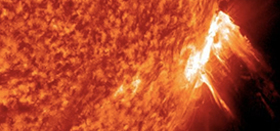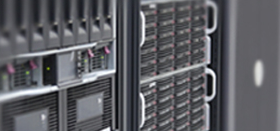Introduction >
KDC for SDO
The Living With a Star (LWS) Program of NASA provides missions to improve our understanding of how and
why the Sun varies, how the Earth and Solar System respond, and how the variability and response affects humanity
in Space and on Earth. Korea Astronomy and Space Science Institute (KASI) takes part in constructing the data center
for Solar Dynamics Observatory (SDO) and the ground receiving system of Radiation Belt Storm Probes (RBSP)
in order to cooperate space science research in the LWS program with NASA.
The SDO is the first mission of NASA's LWS Program which is designed to understand the Sun and its impacts on Earth. The SDO is the most important solar mission in this decade. The SDO is designed to help us understand the solar influence on Earth and Near-Earth space by studying the solar atmosphere on small scales both of space and time and in a variety of different wavelengths simultaneously. It was launched on February 11, 2010. There are three scientific instruments: Atmospheric Imaging Assembly (AIA), Helioseismic and Magnetic Imager (HMI), and EUV Variability Experiment (EVE).
The Korean Data Center for SDO (KDC/SDO) archives and provides scientific data for AIA and HMI. Stanford University and Lockheed Martin Solar and Astrophysics Laboratory (LMSAL) are jointly operating JSOC (Joint Science Operations Center) which is a data center for HMI and AIA. The KDC/SDO will provide safe, reliability, and availability for the SDO data with them. We will provide easy and fast data access service for researchers in Asia.
The SDO is the first mission of NASA's LWS Program which is designed to understand the Sun and its impacts on Earth. The SDO is the most important solar mission in this decade. The SDO is designed to help us understand the solar influence on Earth and Near-Earth space by studying the solar atmosphere on small scales both of space and time and in a variety of different wavelengths simultaneously. It was launched on February 11, 2010. There are three scientific instruments: Atmospheric Imaging Assembly (AIA), Helioseismic and Magnetic Imager (HMI), and EUV Variability Experiment (EVE).
The Korean Data Center for SDO (KDC/SDO) archives and provides scientific data for AIA and HMI. Stanford University and Lockheed Martin Solar and Astrophysics Laboratory (LMSAL) are jointly operating JSOC (Joint Science Operations Center) which is a data center for HMI and AIA. The KDC/SDO will provide safe, reliability, and availability for the SDO data with them. We will provide easy and fast data access service for researchers in Asia.

M6.9 Class Flare occurred in Active Region 1515

Data Storage & Server in KDC for SDO


